Is it possible to get a TV to work after a flood? Interior cleaning, repair, photos
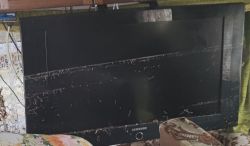 .
.
What does the inside of a TV set flooded look like? Is it still possible to get such a television working? How much work does it take to clean it, how deep is the water able to reach inside? Will a flooded Samsung still work? Let's find out! In this topic, I will just deal with such a TV, model LE32A330J1N.
The TV was flooded halfway through by water, you can basically see the liquid level in the picture. It was under water for about half a day, the electricity had been switched off earlier, so basically the worst of it had passed. However, it is, of course, all dirty:
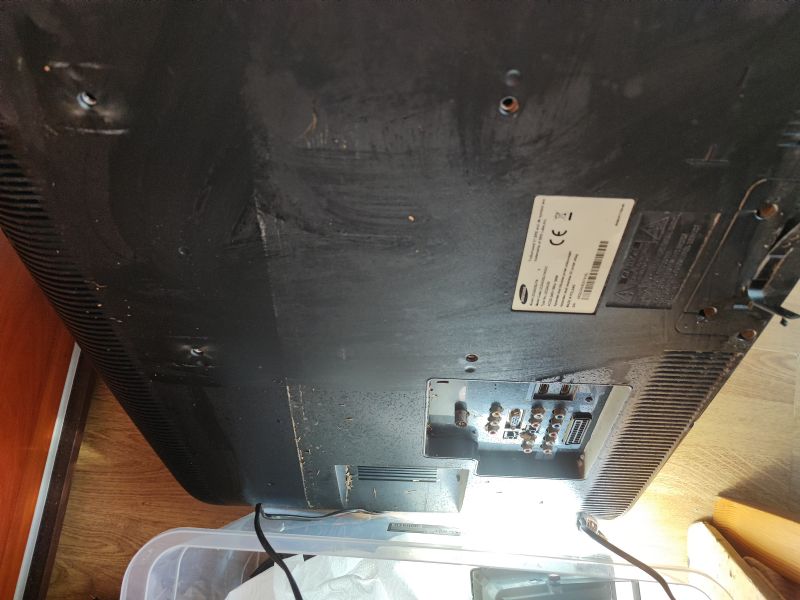 .
.
Silt has settled everywhere, even at the mains connector:
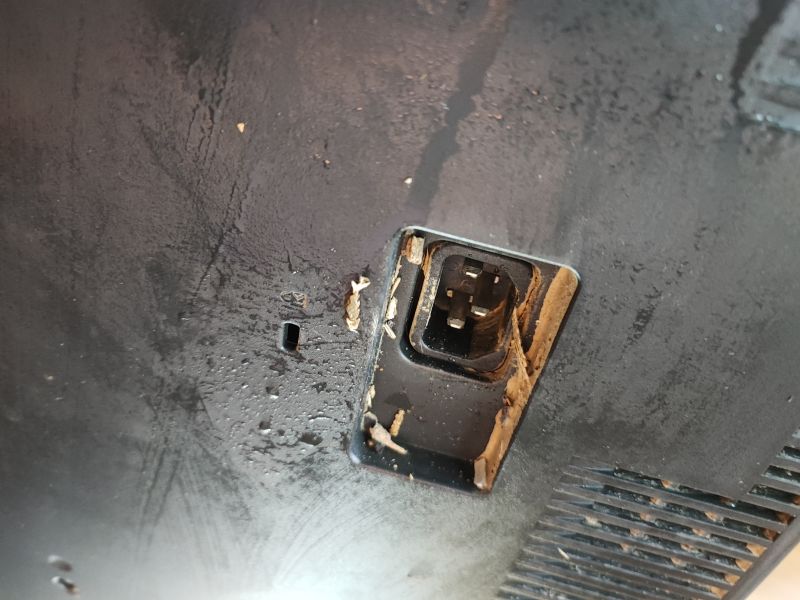
Plate:
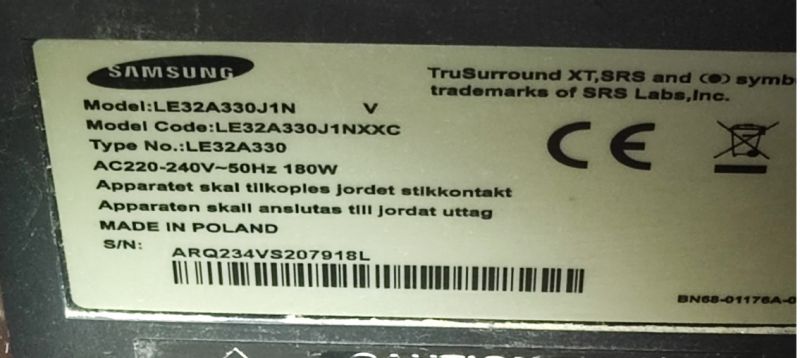
I took care of the TV 3 weeks after it was flooded, so it had time to dry out a bit.
I left the cleaning of the outside for last, however. Let's take a look inside:
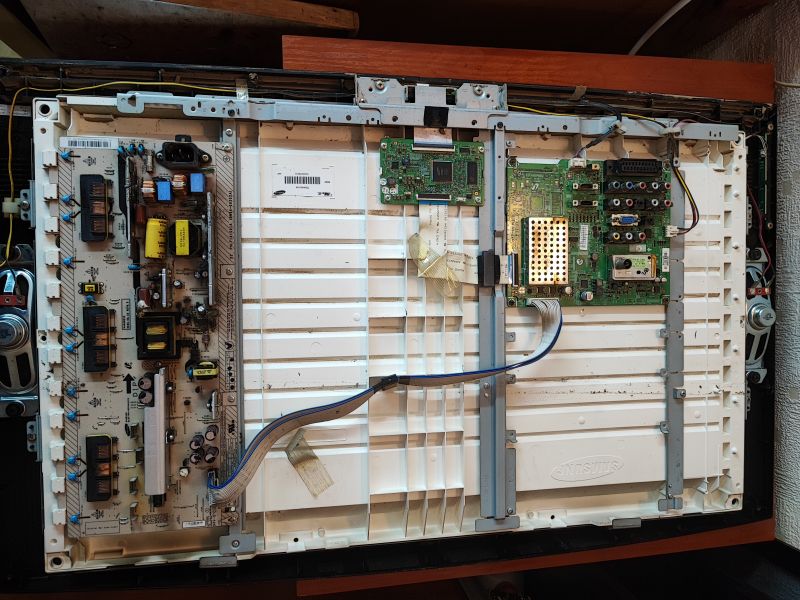 .
.
On the face of it, it's not too bad, I checked the coils and ICs for moisture, and most of them have already dried out. Nevertheless, there is still dirt on the PCB:
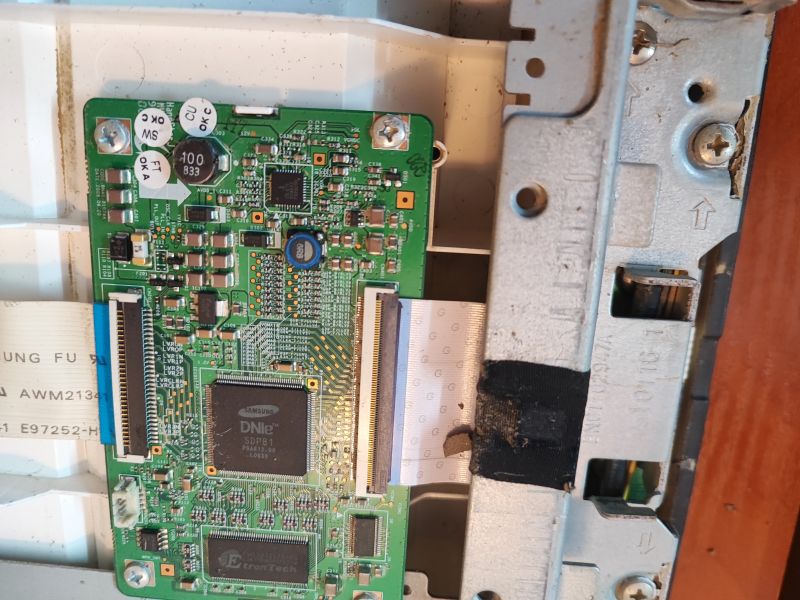
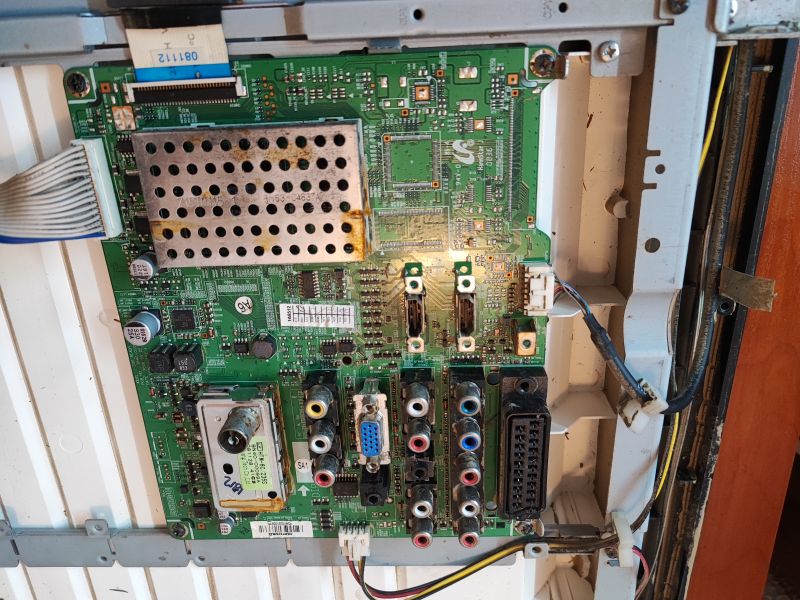 .
.
I cleaned the circuit legs with isopropanol, removed the ribbons:
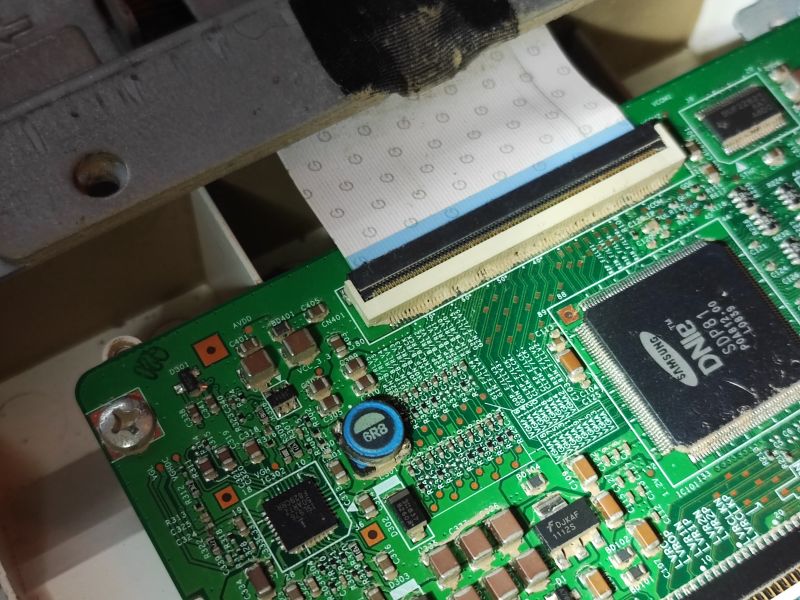
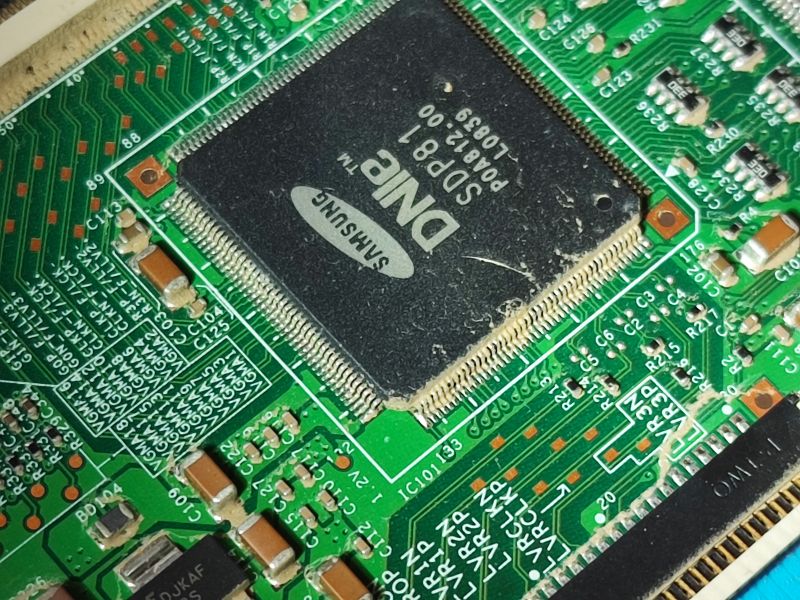
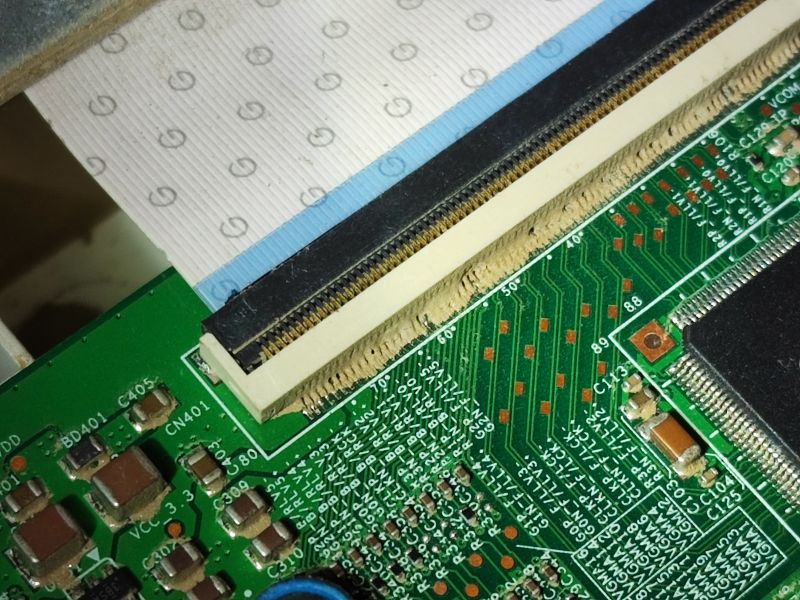 .
.
I also checked the other side of the tiles:
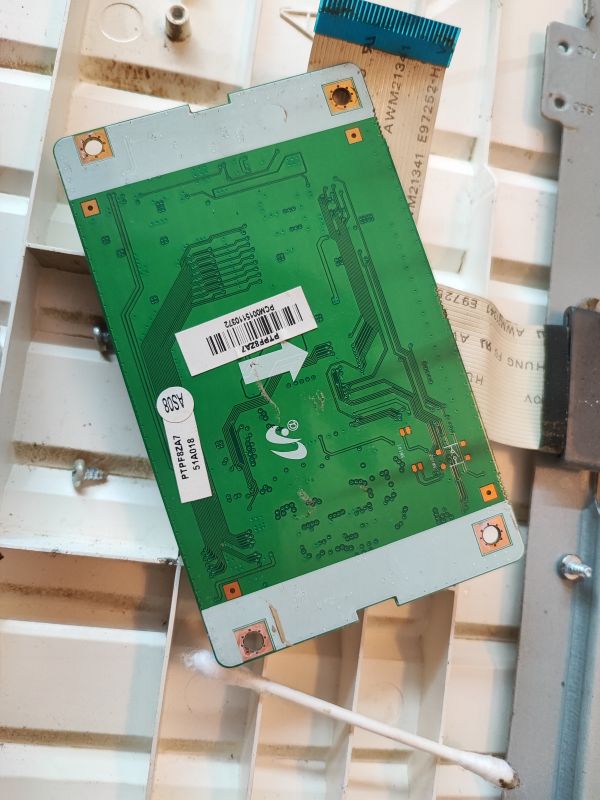 .
.
For the other tiles the same.
Unfortunately access was not good everywhere, but at least the electronics from the matrix can be accessed:
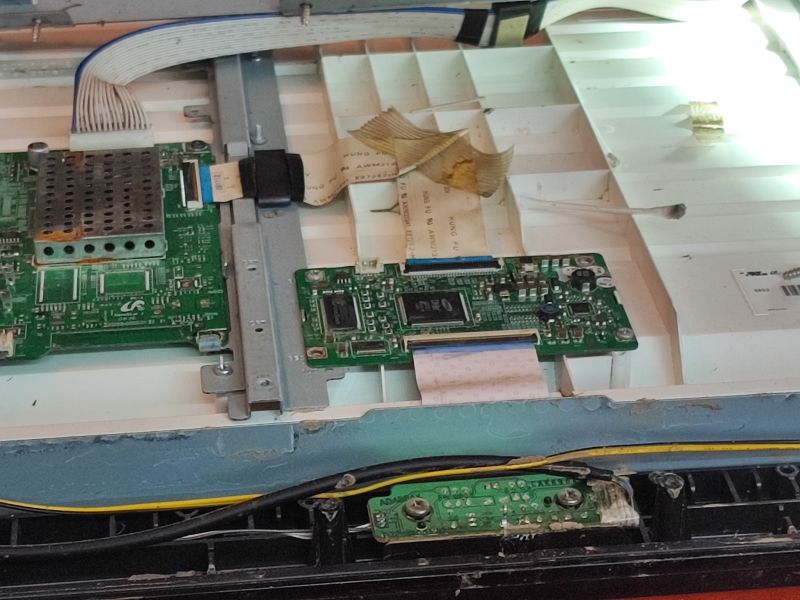 .
.
I then removed the plastic frame at the front. Inside were another supply of dried silt:
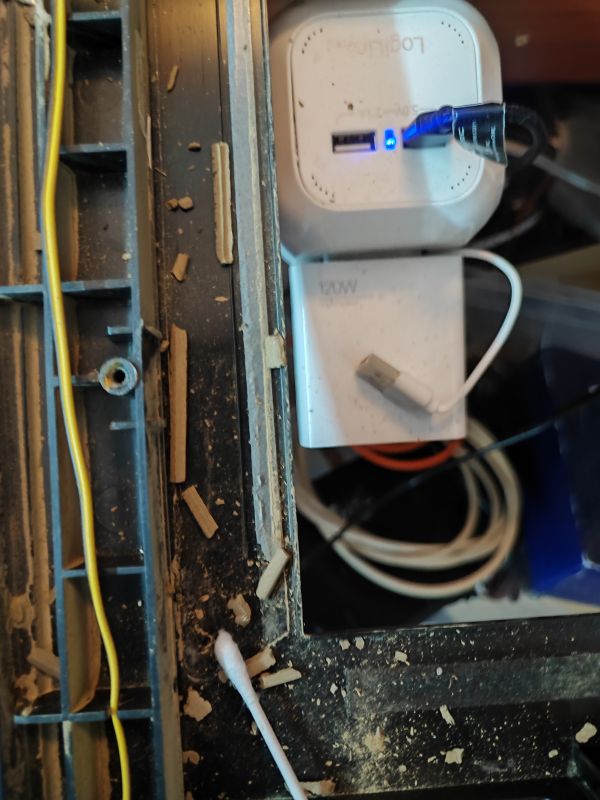 .
.
I then unscrewed the metal frame holding the matrix. Behind the matrix are still the polarising films and the backlight - here fluorescent tubes.
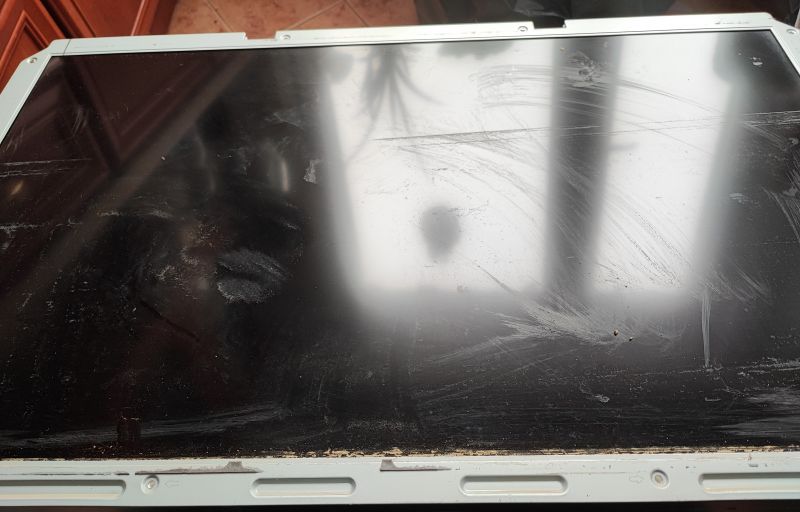 .
.
I cleaned the plates from the matrix:

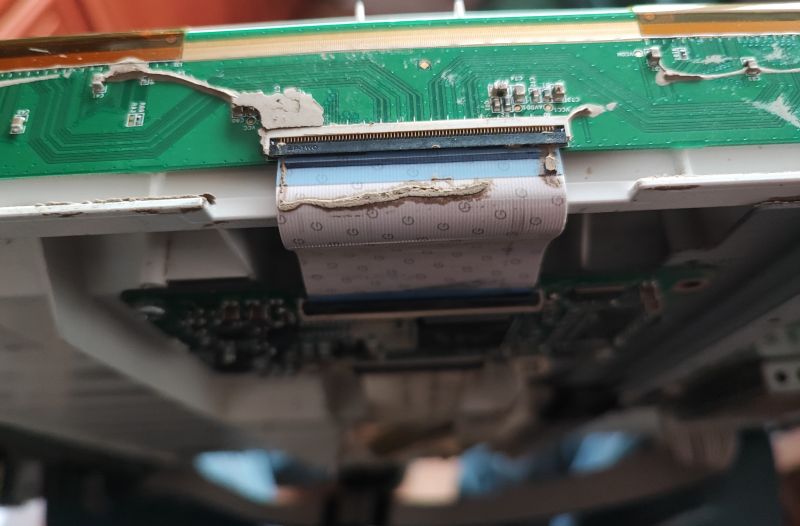



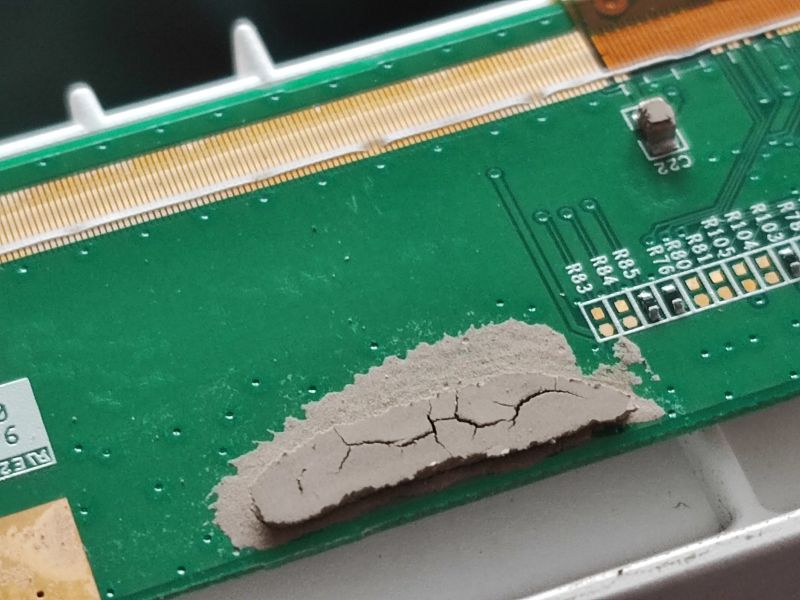
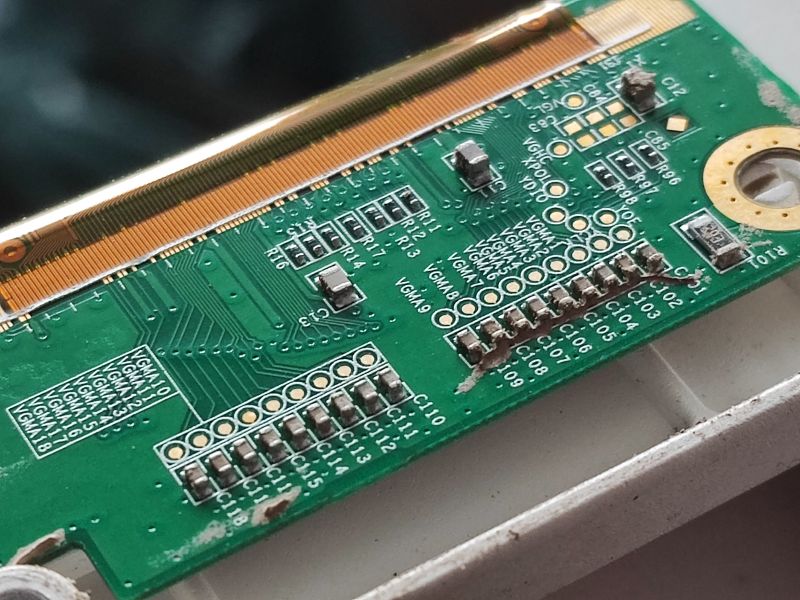 .
.
I then indulged in something slightly against the art - a premature test. I simply wanted to know if there was any point in playing at all. I just made sure that I was sure the moisture was removed from all the PCBs:
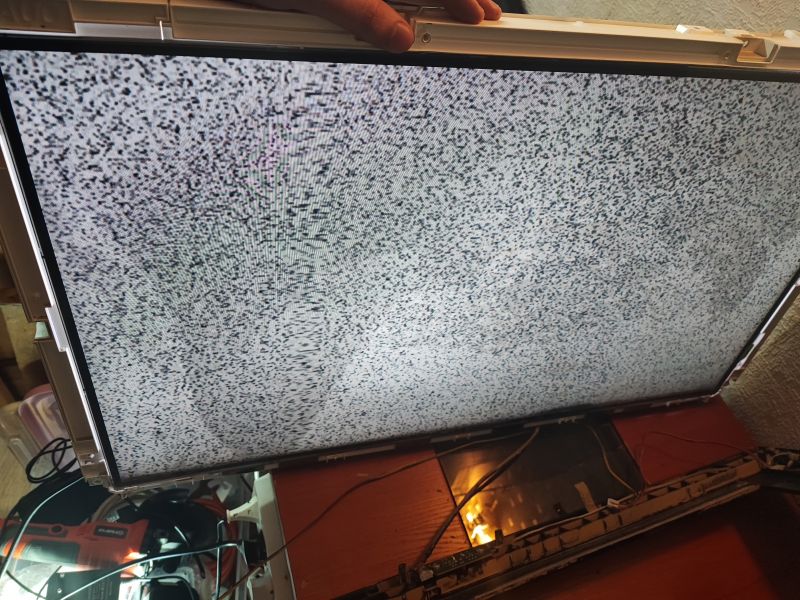 .
.
It works, but there is moisture under the die. So we remove the die:
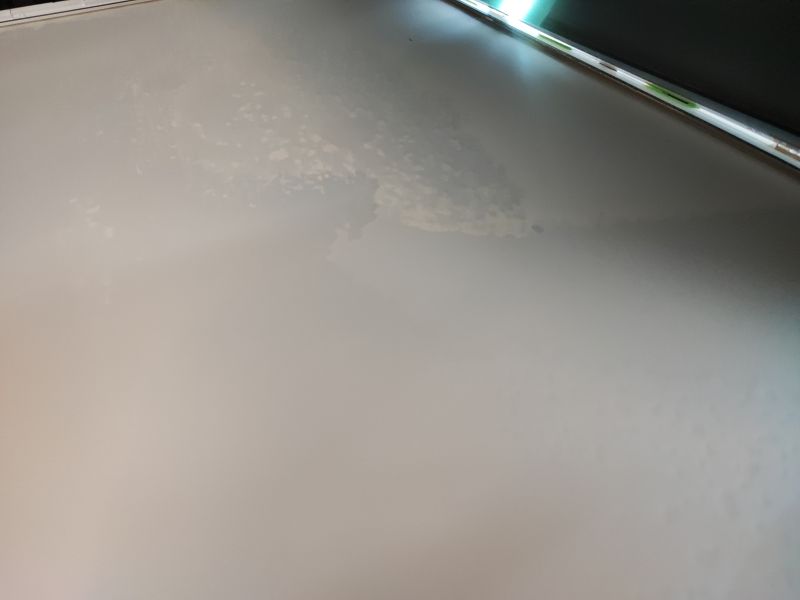 .
.
Dirt can also be removed from it:
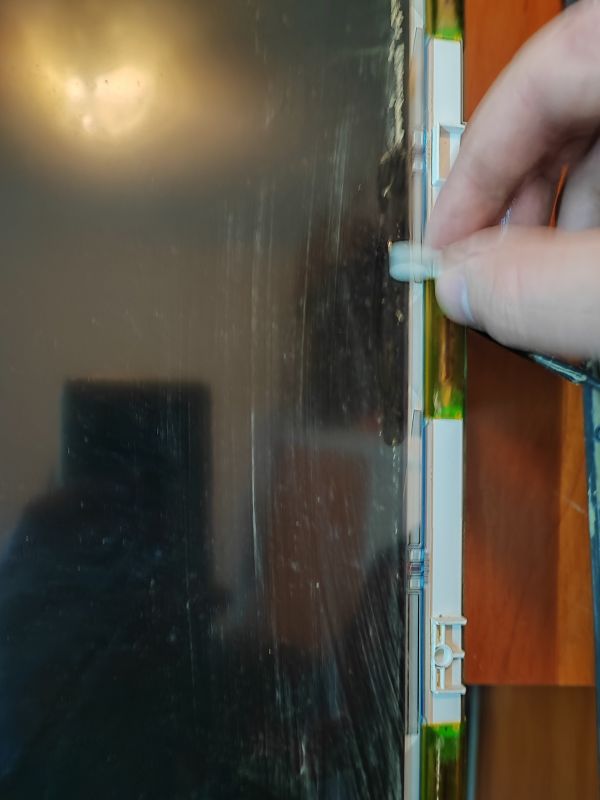 .
.
You can see the patterns from the moisture, the films hold water:
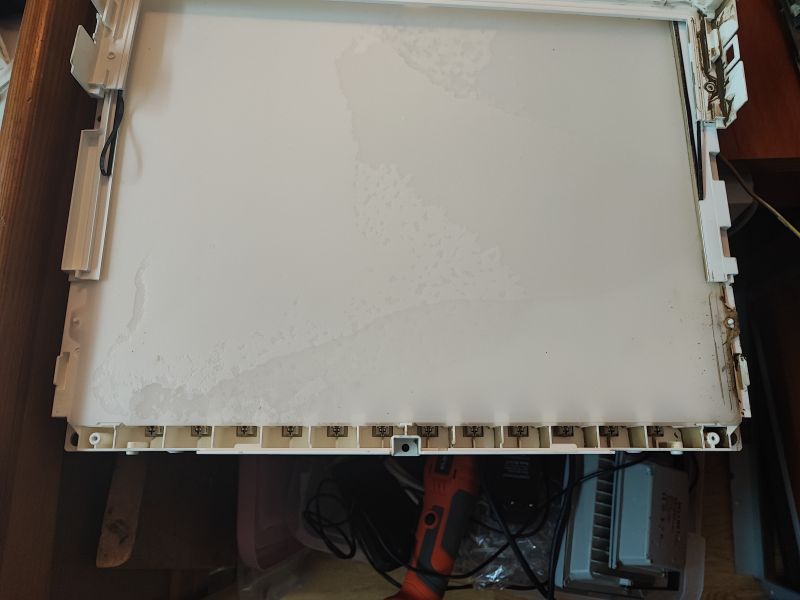
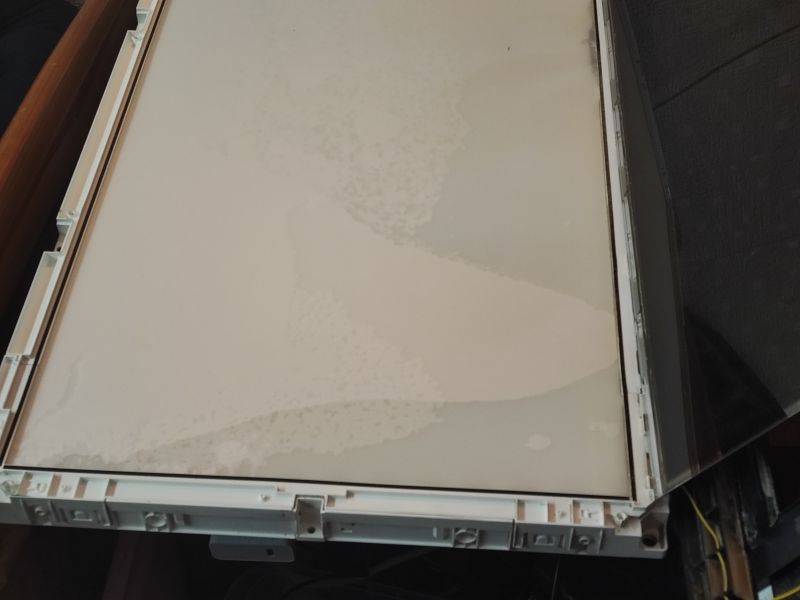 .
.
I took off the plastic "sides" so I could remove the foils. Even there the water arrived:
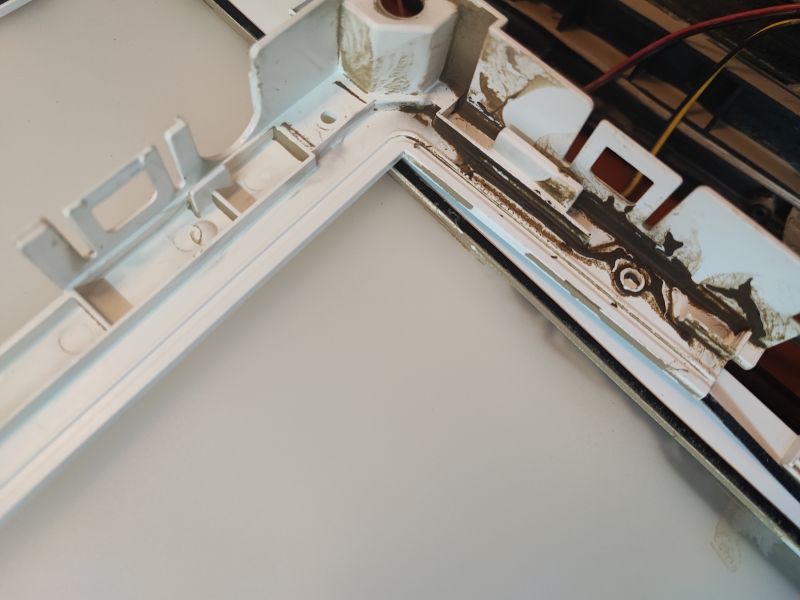 .
.
You can already see the attachment of the fluorescent tubes:
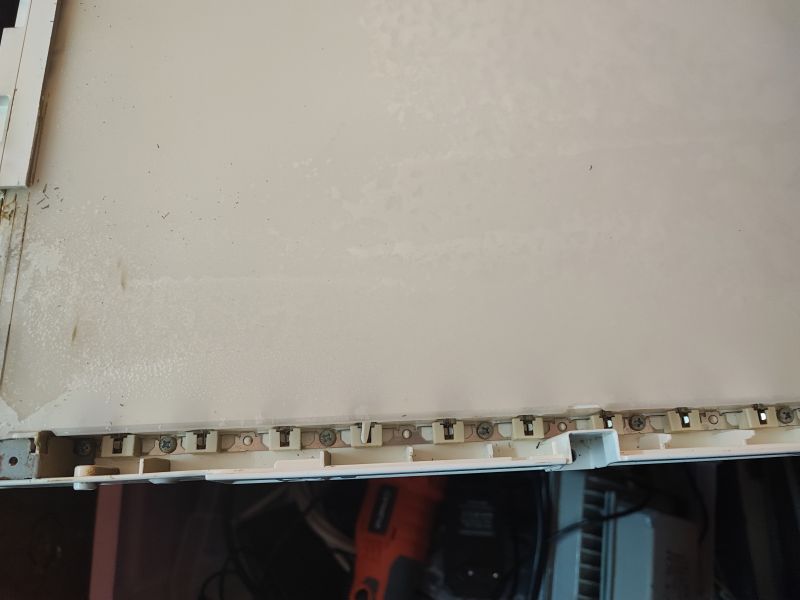 .
.
With a powerful LED lamp I dried and washed the films:
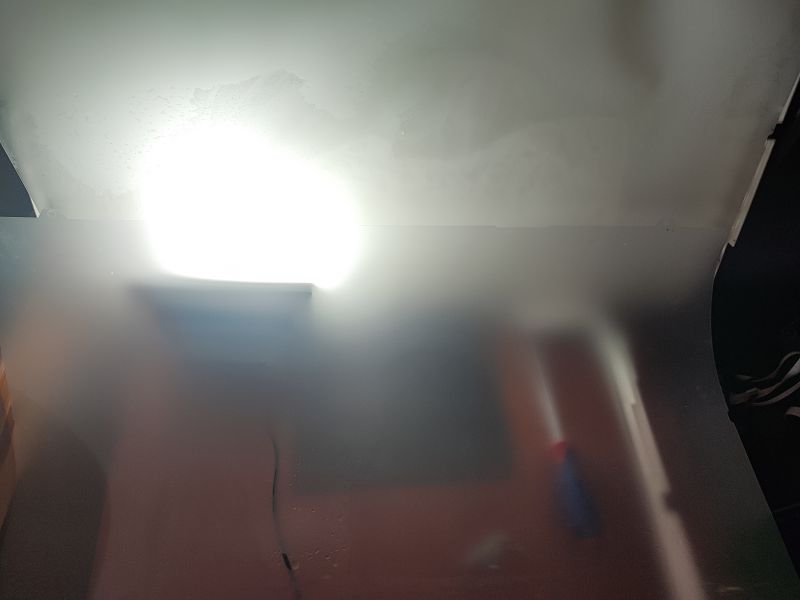
 .
.
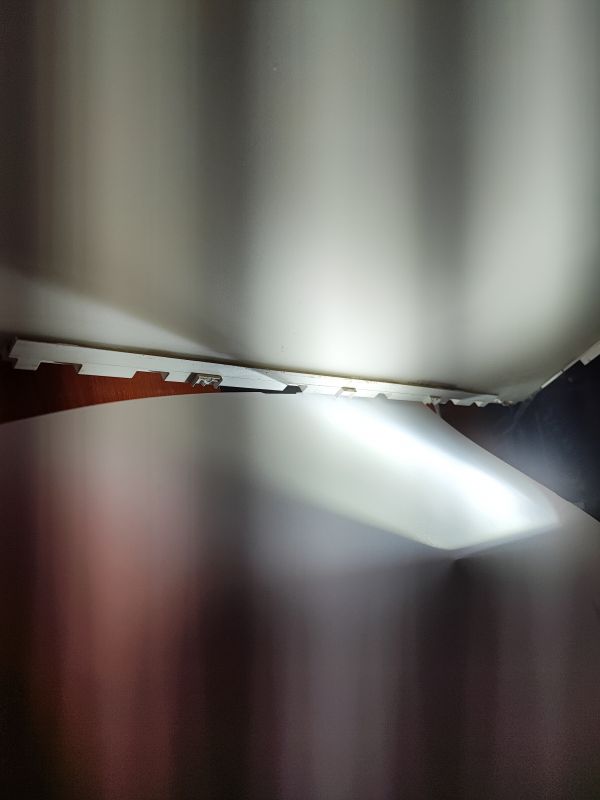 .
.
I got as far as the fluorescent tubes, where I also removed the moisture. The worst part was the grooves at the top and bottom of the screen, there was literally still water there.

 .
.
Time for another test:
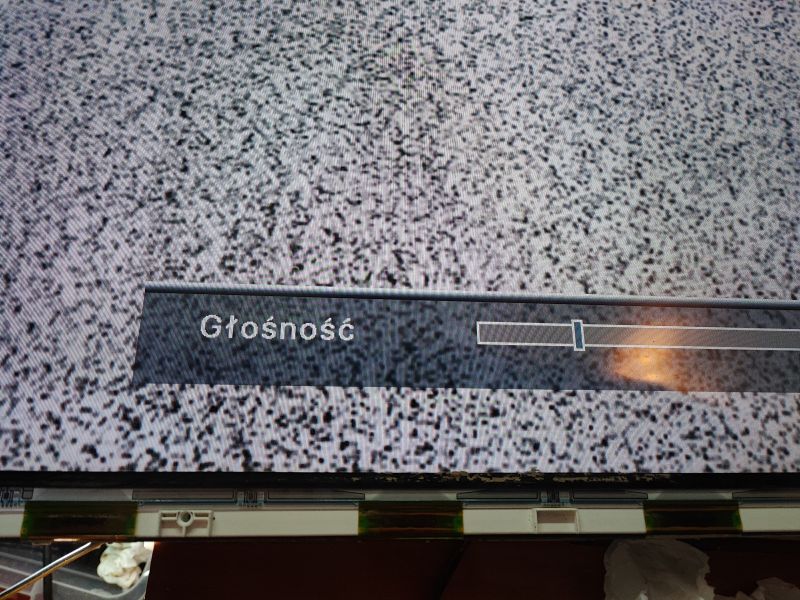
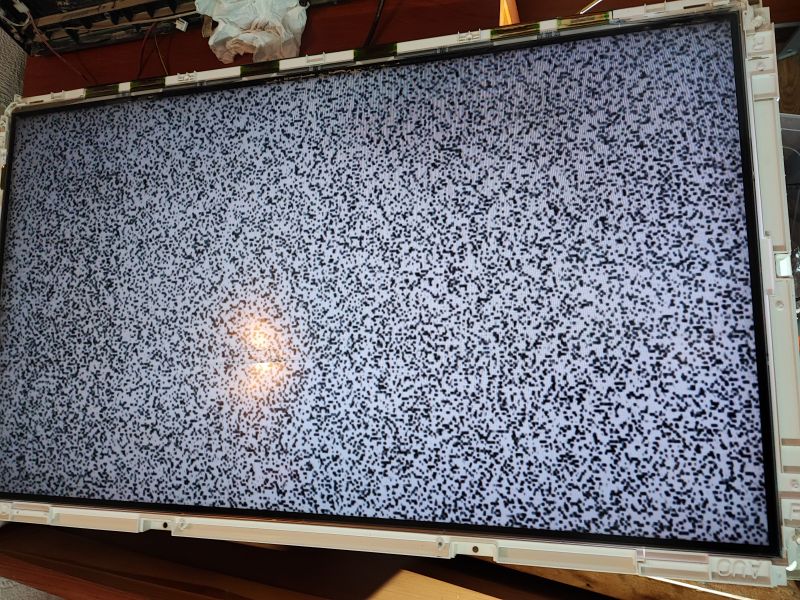
 .
.
But will it pick up any signal? This is where there was a bit of a problem, because. the connectors didn't make contact and also had to be flushed with IPA in them.
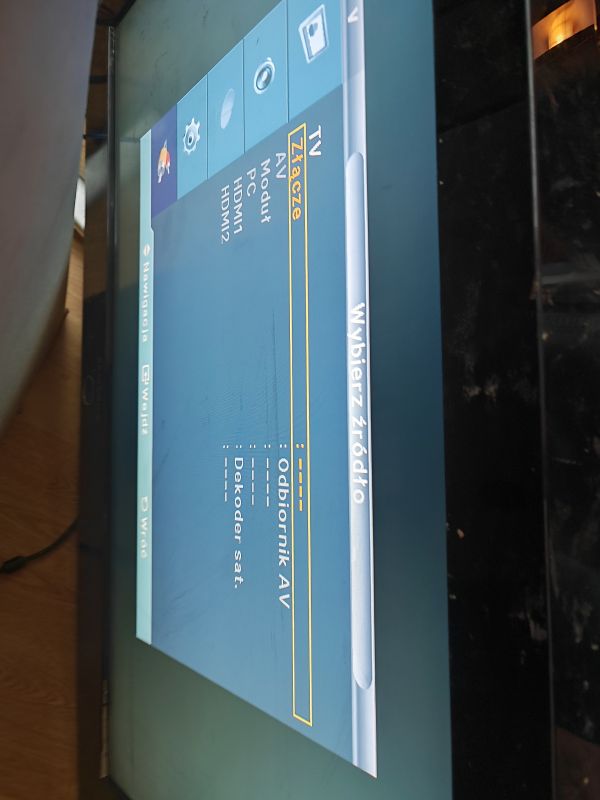
But with VGA it was possible to move:
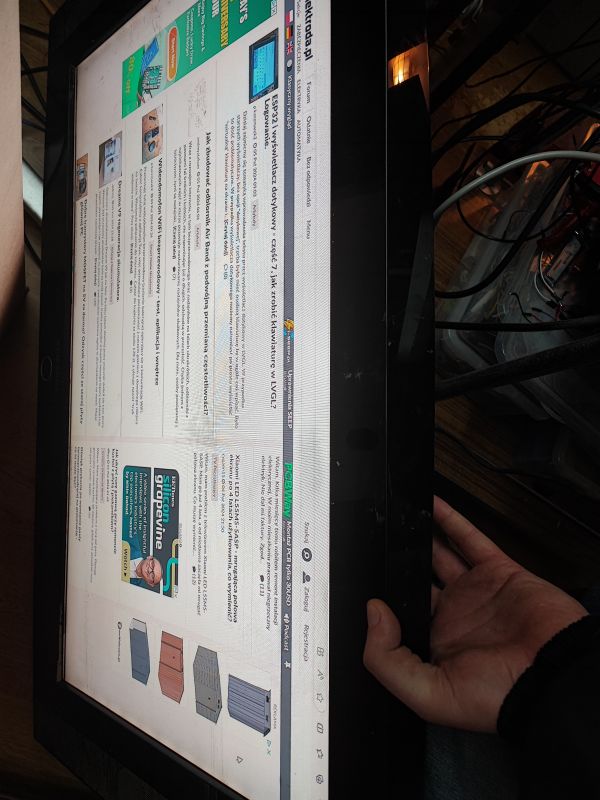

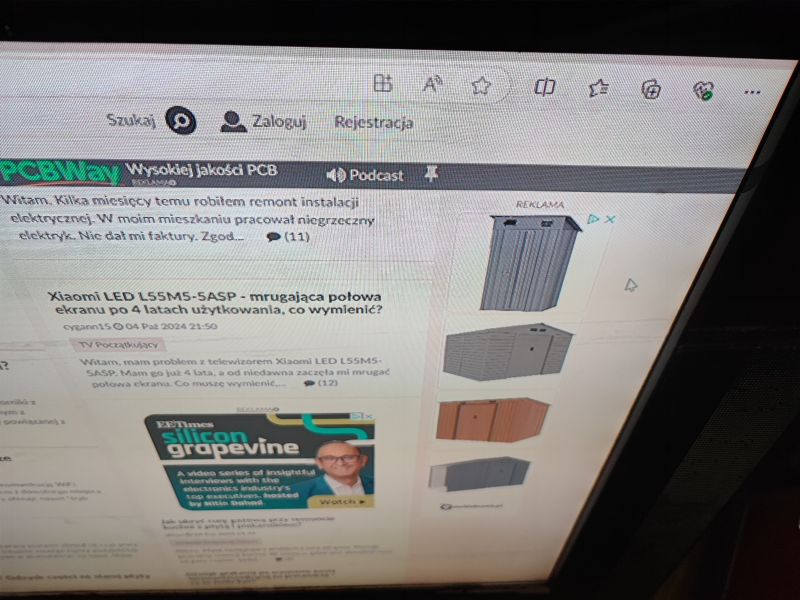 .
.
Then I also checked with the sat tuner - there is picture and there is sound, a complete success!
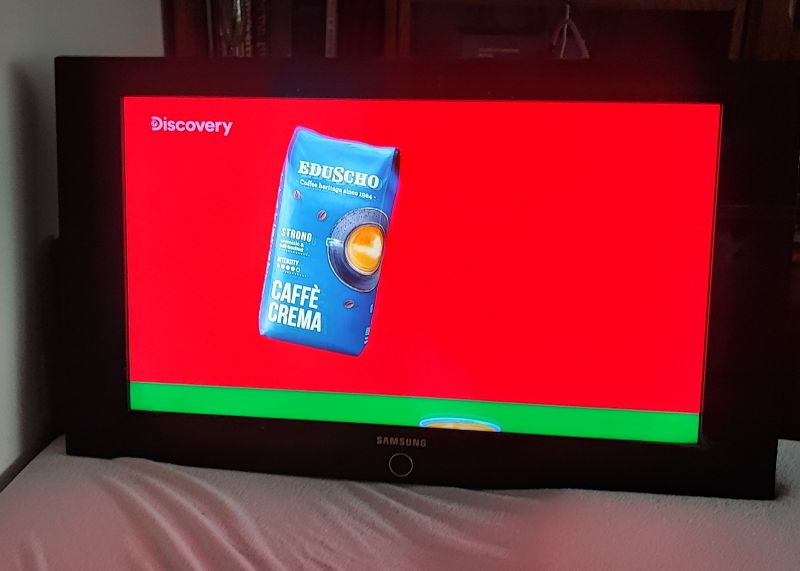
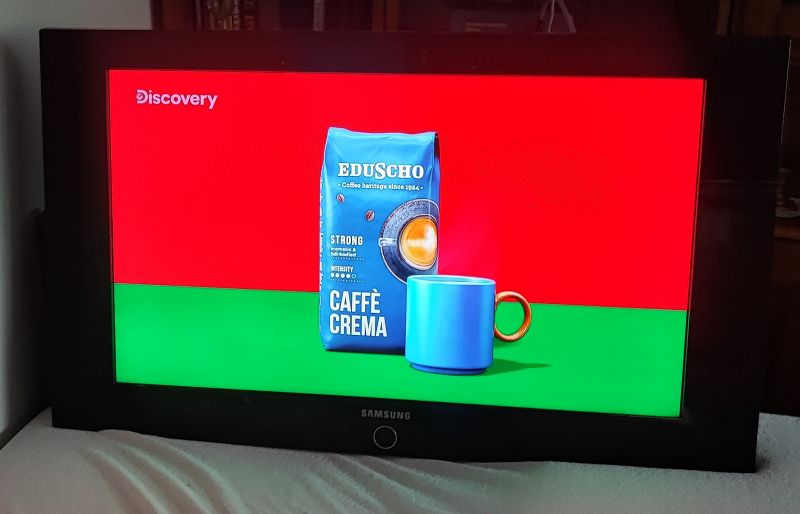 .
.
For the record, I should add that the keypad on the side of the TV also works, so I can navigate the menu, change the signal source, etc....
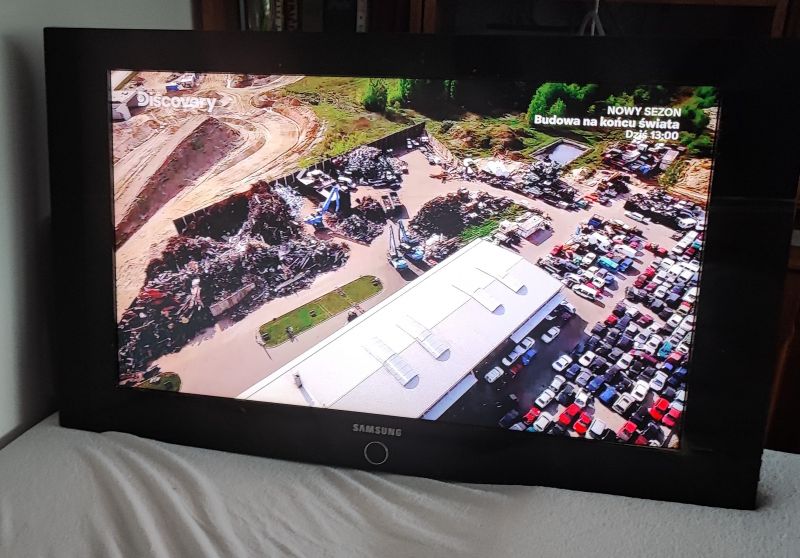
Now all that's left to do is to summarise...
Was it worth it?
Well, for such an old model of TV, this was just an experiment rather than a major repair. Anyway, it was evident in the subject line,
that this is still a CCFL-based backlight model, not LEDs. In addition, I don't know if there won't be any further problems with this unit after a while, although it has been drying for a good three weeks. We'll see.
Apart from that, it's still worth bearing in mind the risks of flood water. I did my best to disinfect and clean the entire housing, just as I did to wash my hands after all the work, but even so, I would not urge anyone to repeat my experience.
However, in terms of cleaning the TV itself, the biggest problem was with the polarisers/diffusers behind the matrix which held moisture. You have to know how to take the whole thing apart and then put it back together again. The matrix is quite a sensitive component, one tap and all the fun is gone. I was also surprised that there was still literally water in the grooves (behind the films).
In any case - you can. Have you already made similar repairs, or do you scrap all flooded equipment straight away?



Comments
. Great respect for your approach to the matter. For such a repair :D . [Read more]
Amazing report! So practical... So that your neighbours don't start dropping off various flooded RTVs ;) now. And probably the number goes into the thousands. What saddens and worries me is how water... [Read more]
. This year's floods (oh, I sympathise strongly with my colleague) may have pushed my curiosity to try to repair something flooded - or at least look inside. My mistake was to buy car audio equipment... [Read more]
Generally, if one has the time, buying previously disconnected equipment after a flood and not running, for a few per cent of the value, is not a stupid idea. In a car, however, it is always the voltage... [Read more]
Let me ask you one more thing... How about the CNC3040? Was there a lot of effort to bring it back to life? - Or is it not yet known? [Read more]
. I would seriously love to showcase some more flooded equipment on the forum, but alas.... my "storage" rooms have all been flooded with water up to the ceiling and are now emptied to 0, even of furniture,... [Read more]
Was it worth it - yes worth it to show that you can fix equipment that no one will spend time on. Super presentation. Is it financially worth it - yes - you won't pay for the TV, yes - we won't pay for... [Read more]
@pkaczmarek2 I thought you wouldn't save the TV because water and silt would get into every tiny crevice. Respect for your thoroughness and patience while working. Was it worth it? We'll see in a few... [Read more]
After the 1997 flood I tried to salvage flooded computer equipment including HP laser printers. Except that this equipment had been underwater for longer, completely flooded, although unplugged, because... [Read more]
Son was refurbishing a Philips TV after a fire . TV smoked (you could see on the screen) and flooded with fire extinguishing agent. It was disassembled and dusted. It worked for a few months. Then lines... [Read more]
Not very optimistic. But right, it's not tap water, it's carrying the neighbour's septic tank, for example. [Read more]
I have not been in contact with electronics after such a flood, so it is difficult to judge. I only once rescued a car radio panel that had been drowned in water with some washing up liquid, but to save... [Read more]
I once rescued (several, or even a dozen years ago) a projector of someone from us on the forum. It was also post-flood. Everything inside was covered with a beige-brown deposit. It was a lot of work.... [Read more]
When I was servicing office equipment: fax machines, telephones, exchanges (after being flooded with coffee, tea, coca-cola (after being flooded with coffee, tea, coca-cola)? When I was running a service... [Read more]
Some people wash PCBs in dishwashers - normal dishwashing gel and programme about 50...60 degrees - supposedly works very well - I haven't checked it myself so it's hard to say - as for washing - I would... [Read more]
. Oh, I forgot to write about this. It pulls out nested water well and of course blowing with air, sometimes overnight on a warm radiator. The cells that fell into my toilet when I peed I mention only... [Read more]
. For me, a long time ago, a three-phase squirrel cage motor from a hydrofoil that was mounted in the basement of the house flooded twice. I was amazed that an electrician-mechanic friend was able to... [Read more]
Coca cola is a lot of acid though and a good electrolyte. Dishwasher pad salt,powder is an alkali, so there will be conditions for corrosion. Dishwashing liquid is also an alkali, so it falls off. The... [Read more]
. A good rinse is therefore necessary - plain water to start with and then deionised water and finally drying with IPA. [Read more]